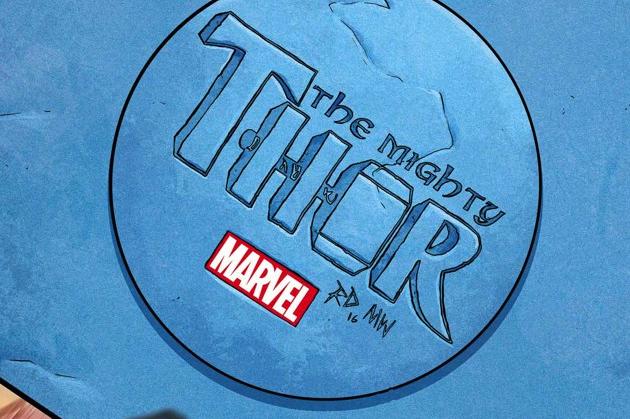Mighty Thor #12
Written by Jason Aaron
Art by Russell Dauterman and Frazer Irving
Published by Marvel Comics
Sigh.
I’m not sure what writer Jason Aaron was thinking with this one. After Thor’s hammer Mjolnir began showing signs of sentience, this story could have gone in many fascinating directions. Aaron chose what was probably the worst.
Instead of presenting the reader with a smooth narrative of the “true origin of Mjolnir,” we’re subjected to a mess of contradictions and muddled storytelling that simultaneously makes no sense and undermines the potency of Godly characters central to Thor’s stories.
This issue indicates that Thor isn’t really the god of thunder. In a way, Mjolnir is the real god of thunder and Thor is more like its jailer. Turns out, this thunderstorm superpower was originally a cosmic storm that Odin punched in the face and trapped in a rock. Like...literally. The dwarves forged this metal rock into a mighty hammer, but it took so much effort that it nearly destroyed their planet. The dwarves had to lasso a sun into their forge to make the metal malleable. It took so much energy that it extinguished the star.
All this happened eons before Thor was born, which raises annoying questions. How did the hammer get an inscription on the side? If nothing else, this issue established that no one can etch a damn thing into the metal. And why would Odin label it the “power of Thor?” It’s not even his. It’s not even Odin’s to bestow on him. The power is just something Odin happened to cross paths with.
Eliminating the mystery of something mystical is not always the best storytelling strategy. It’s even worse when it doesn’t make sense. I was painfully reminded of The Phantom Menace’s explanation of midichlorians.
We should give Jason Aaron credit for swinging for the fences. He decided to stack his own mythology onto Norse mythology. He tries to write the origin story like we might see in scripture. It feels like a narrative that was cobbled together from multiple sources, like the New Testament’s four versions of the Resurrection. But even that presents problems, because Norse mythology was relayed in poetry, not scripture.
Is this the best way to convey information to the reader? Writers like Neil Gaiman and Alan Moore are careful with how they implement mythological storytelling techniques and they stay true to the origins of their subject. It doesn’t seem like Aaron gave it enough thought. He can’t keep his story consistent from one panel to the next. On one page, he claims that dozens or hundreds of dwarves are said to have worked on Mjolnir (a conservative estimate, it says). In the next panel, it says “all dwarves” were exhausted from working on it. An editor should at least mention these things. The editor also should have caught Aaron’s use of the cringe-worthy phrase “almighty might.”
Aaron has turned in some excellent stories. This is not one of them. He took a wide turn with his writing and slid right into a ditch. Full speed. What’s worse, this diminishes the Asgardian mythos we’ve come to understand in the Marvel Universe. Shaking up how things work in an established comic book universe can reinvigorate a series, but not if the established lore is replaced with a poorly thought out, poorly executed, contradictory catastrophe of a backstory.
At least it was cool to see Frazer Irving illustrate the origin story.





